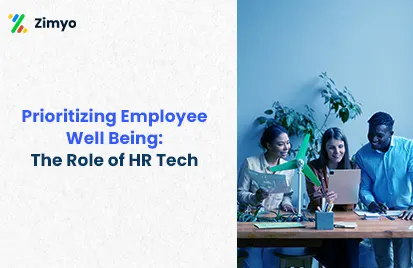Economies across the globe are a month past the rather unfortunate anniversary of Covid-19’s worldwide lockdown in March 2020. According to Gartner, only 12 percent of businesses were believed to be prepared at the time to make the remote-work switch.
Undeniably, the Covid situation did improve over the course of last year, as many organisations turned operational in the hybrid mode of work. However, with the recent rise in the number of cases throughout the world, our work situations stand unclear once again as we progress into 2021.
Today, complete remote work is back into the picture. And this time, employees are more welcoming towards the remote culture and stand clearer about what they want.
According to the Forever Flex: Making flexible working work beyond a crisis report by Flex Appeal and construction firm, more than seven in 10 (72 percent) employees want to continue working from home after the pandemic; a similar proportion (70 percent) want to carry on working flexitime, and 64 percent want to keep part-time hours.
In such a dynamic where employees are more inclined towards independent remote-working, it is important for HRs and managers to bring out the best in their workforce for the company’s benefit. The only way to achieve this by empowering work from home employees while strategically growing the business.
Remote Work Has Its Share of Advantages
This lockdown, employees are looking forward to businesses making employee well-being the priority. What managers usually misinterpret about this demand is that focussing on employee well-being would make the business suffer. While the truth is, the process to help employees work from home and induce productivity can, as it happens, help boost your business up.
Here is how.
-
Higher productivity
One of the best ways to foster productivity among employees working from home is by building a sense of trust. Trust among organisations is a huge influencer of employee engagement. And it is no secret that nothing drives productivity quite effortlessly as employee engagement.
Engaged employees are 43 percent more productive than others.
University of Cambridge
The more invested you let your employees be in the company’s success, the more willing they’d be to push themselves and reach their goals. Allowing your employees to work according to their schedules and giving them enough time to attend to their personal needs is how you can build trust in remote work.
-
Reduced absenteeism
One of the biggest perks of employees working from home is the consequentially reduced absenteeism rate. In usual scenarios, employees are offered the possibility to work remotely if they feel sick, thereby stopping the spread of any illness as such to the rest of the team. Since we are working from home exclusively, we ensure better health, less absenteeism, and more effectiveness ultimately by eliminating this contact altogether.
Likewise, since there is an absence of a common workplace, there are lesser distractions which leads to employees enjoying a much-focused work schedule.
Best Practices for Managing a Remote Team
Work from home is the new normal and this statement is likely to become our ultimate reality. Therefore, it is essential for managers to factor activities that constitute to “mutual growth” of the business and its workforce.
1. Drafting an apt work-from-home policy
A WFH policy can be the solution to most of an organisation’s remote-work challenges. The purpose of this policy is to optimise the benefits while limiting the risks of working away from the office.
It is the responsibility of employers and managers to make sure this policy lays the code of conduct of their business during remote work in a mutually beneficial model.
An ideal WFH policy would consist of a detailed outline about
- Roles and responsibilities of the employees
- Communication channels to be followed
- Attendance and availability standards for employees
- The equipment to be offered by the organisation to remote-work
Senior leaders need to role model the behaviours they expect of others, and businesses must focus more on equipping managers with people management skills to properly manage and support employees working from home.
– Ben Willmott, Head of Public Policy at CIPD, the professional body for HR and people development.
Along with drafting this policy, C-suite executives must also equip their team leaders with the necessary training to execute it effectively.
2. Setting a schedule and sticking to it
According to a new report by Microsoft Surface and YouGov- Work Smarter to live Better, one in three employees (30 percent) reported an increase in their work hours while remote-working, and more than half (53 percent) felt they had to available at all times.
The aftermath of these numbers can be a dreadful matter to recover from. Because, an exhausting schedule might work out and bring favourable results for a short-term project but, it is bound to lead towards lesser productivity and low employee retention in the longer run.
Therefore, HRs must encourage employees to take regular breaks from their screens and create a dedicated timeline for eating time-outs for them as well.
3. Providing tools and resources
In a remote setting, employees need more than just motivation to function. The availability of the right kinds of resources, laptops, tablets, phones, internet, etc, becomes essential. Therefore businesses must send out the proper tools to help employees work from home.
Resources such as training and tips to use Google Drive, Dropbox, virtual meetings, etc can be used to help them access the required documents on time.
Moreover, It was noted that companies that have sent their employees working-from-home a care package saw a rise in virtual employee engagement and productivity projections by as much as 17 percent.
Therefore, businesses must also look into such informal measures to improve performance.
4. Keeping employee well-being as top priority
Employee well-being as imposed by thousands of employees is the most important factor to consider in 2021. Among the rising level of physical ailments such as posture change, degrading eye-sight, etc, stress and anxiety have increased drastically in remote-work settings.
In a recent survey by Nuffield Health, four in five (80 percent) Brits said working from home had had a negative impact on their mental health.
To tackle employee well-being issues revolving around mental health the best way is to conduct activities such as-
- Mental health day leaves,
- Sharing resources for mental wellness,
- Conducting online mental health discussions,
- Offering tele health counselling services (anonymous), and
- Tackling social isolation with virtual activities like coffee breaks, online exercises, yoga sessions, and also happy hours.
Since the pandemic is here to stay for as far as scientists can see, so is the possibility of working from home. In such a case, the most a business can do is to make this transition and its eventual functioning as easy as possible.
The easiest way to meet your employees’ work from home requirements and expectations is with the help of the right employee engagement technology. Agreeably, there are numerous advanced tools available in the market to help businesses create an engaged and productivity-boosted workspace.
An ideal employee engagement software would help businesses create an effective strategy, and would also track the level of engagement among the remote employees.







